Sixes have become the heartbeat of modern T20 cricket. In almost every men’s T20 match, we’re seeing batters clear the ropes with remarkable ease and frequency. But what’s behind this six-hitting revolution? Is it flatter pitches? Declining bowling standards? Or are batters simply evolving to meet the demands of the format?
Using data from Spoda AI, let’s break it down.
What do the numbers suggest about six-hitting?

The balls-per-six ratio in men’s T20 cricket from 2010 to 2025 shows an eye-catching trend. On average, batters are hitting sixes far more often now than they did a decade ago. Comparing pre-2020 and post-2020 data, the balls-per-six ratio has dropped by 3 balls. In simple terms, modern T20 batters are clearing the ropes every 3 balls quicker than players of the previous era.
Are pitches the reason?
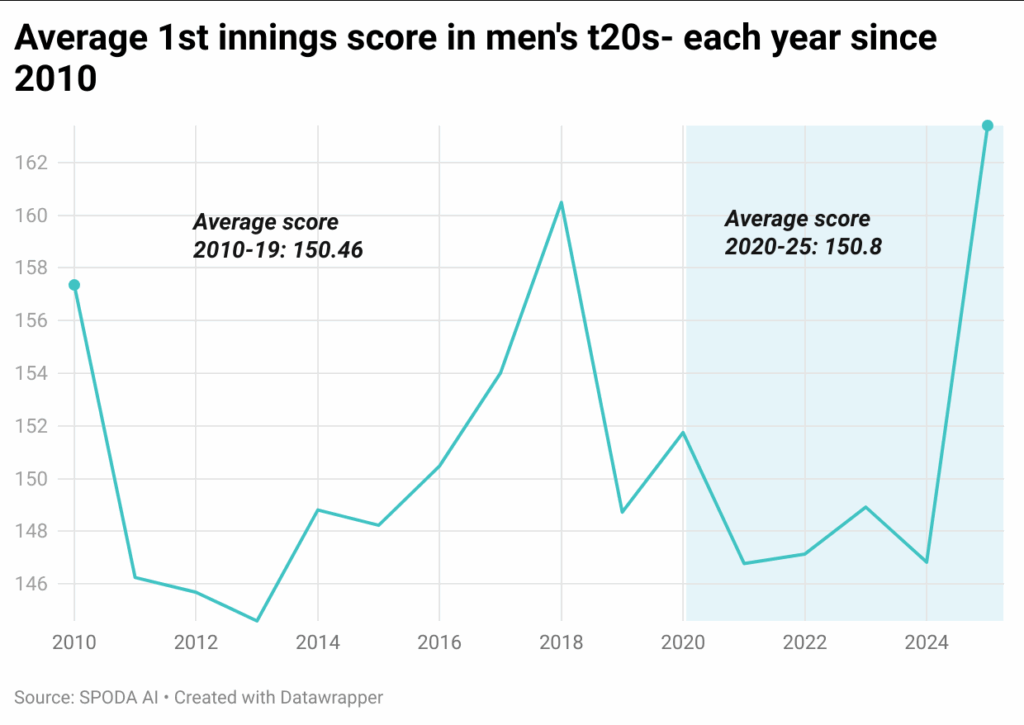
Could better batting pitches in T20s be enabling this? The data suggests not. When we analyse average first-innings scores in men’s T20s from 2010 to 2025, there’s no major shift. Bothpre-2020 and post-2020 averages remain in the 150s, showing that pitch conditions haven’t significantly improved to favour batters.
Have bowlers lost their edge?
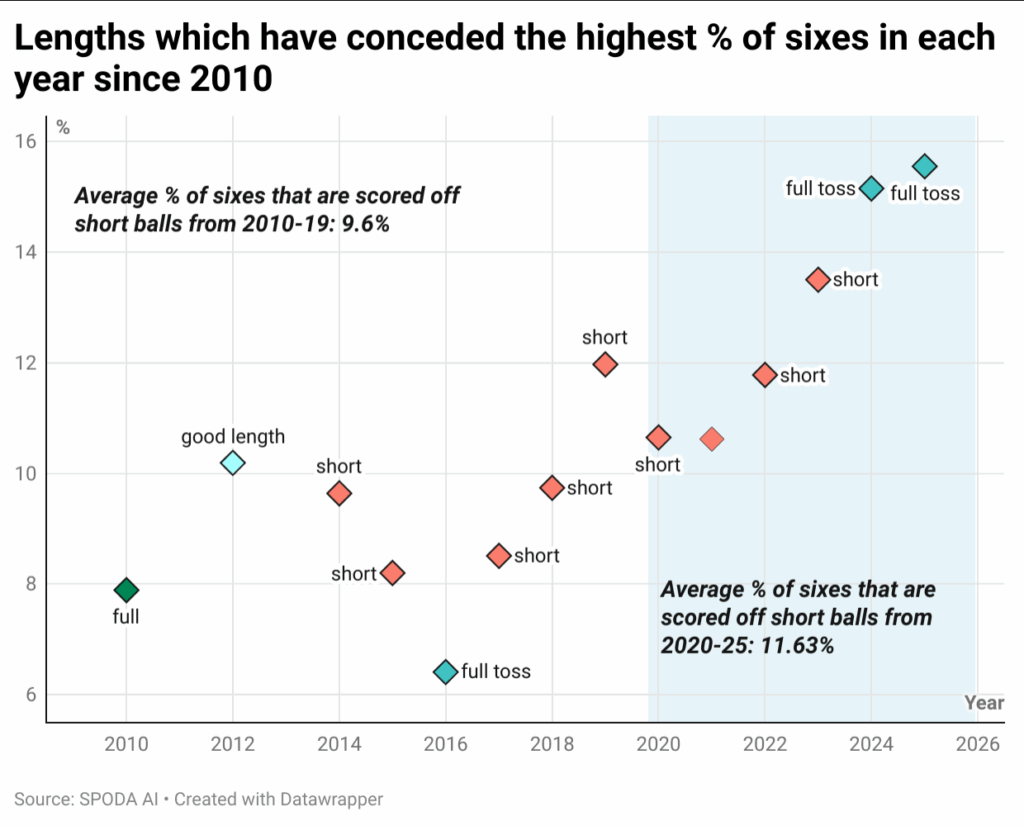
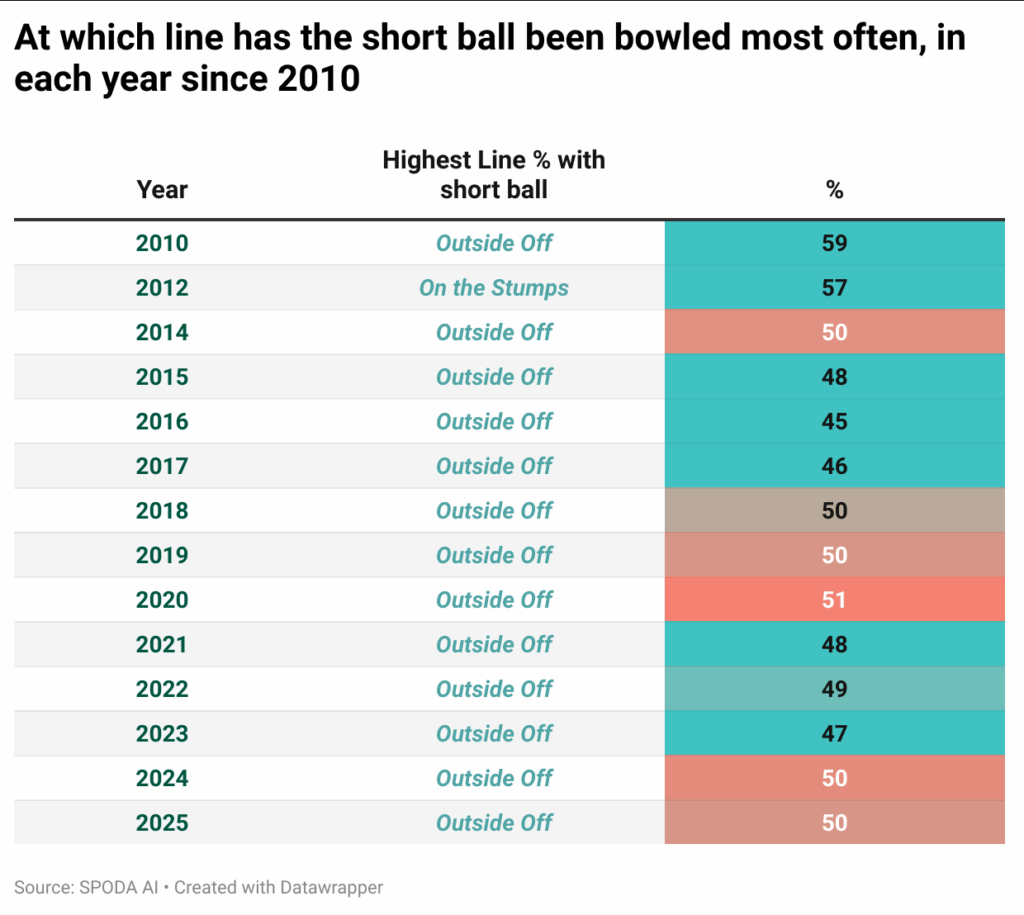
Next, we examined the bowling side of the equation. Since 2010, the short ball has been the length against which the highest percentage of sixes have been scored. Pre-2020, it was the dominant length (mode) in 5 seasons. Post-2020, it remains dominant in 4 seasons.
Interestingly, the percentage of sixes hit off short balls has risen slightly—from 9.6% pre-2020 to 11.63% post-2020. This suggests that while bowlers haven’t become significantly worse in their lengths or lines (the most common line for short balls, “outside off,” has seen no significant change), batters are punishing them more effectively.
How have batters adapted to the short ball?
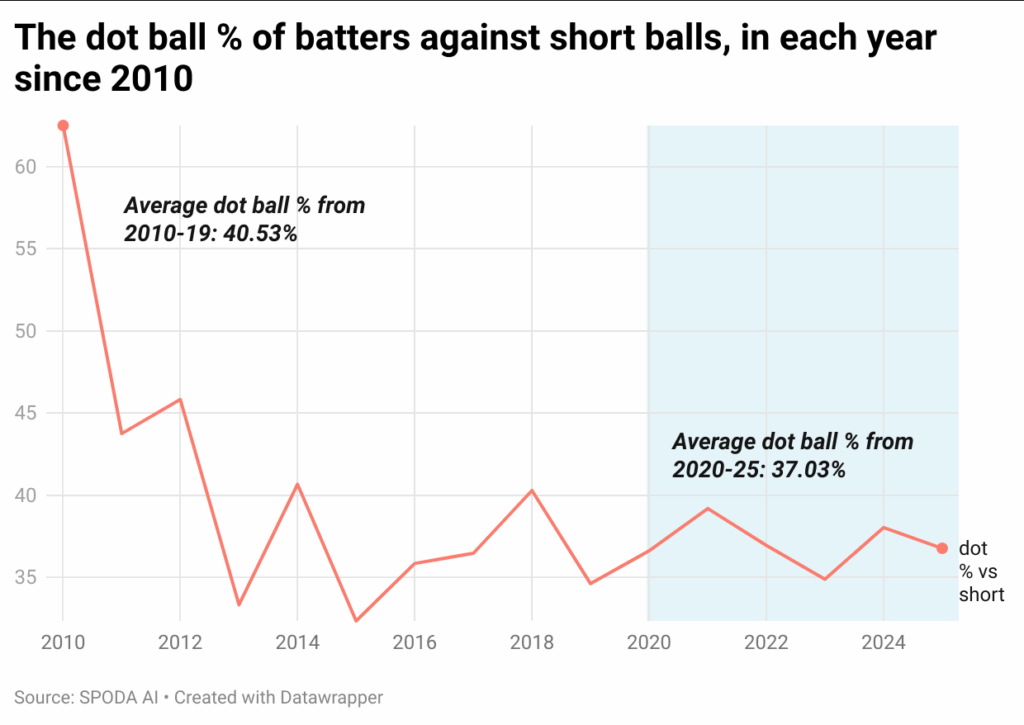
This is where the biggest transformation lies. The dot ball percentage against short deliveries has dropped from 40% pre-2020 to 37% post-2020, showing that modern T20 batters are no longer merely defending or ducking the short ball—they’re scoring off it more.
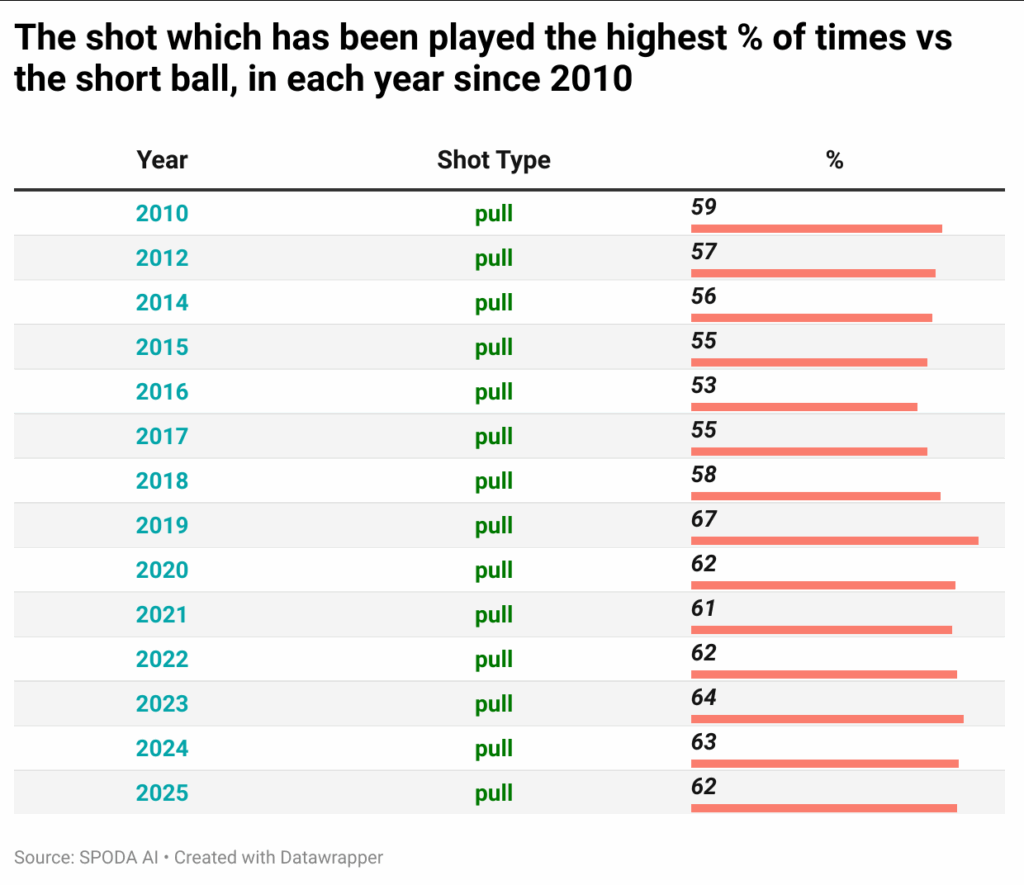
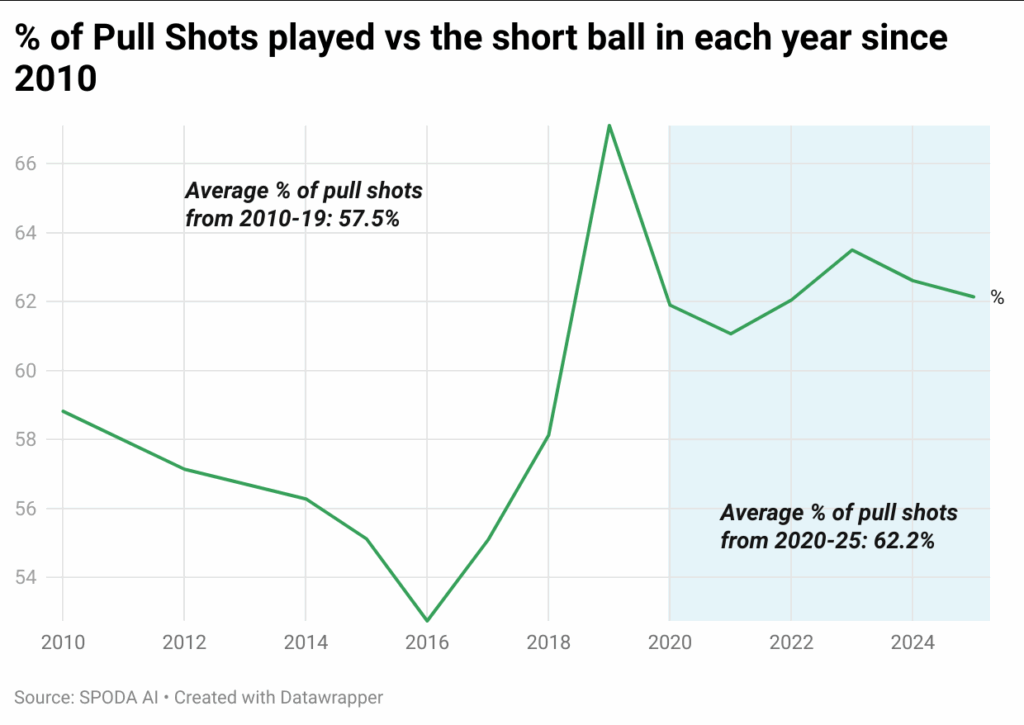
Digging deeper, we found that the pull shot dominates as the preferred response to short balls. Its usage has jumped from 57% pre-2020 to 62% post-2020. Clearly, modern players are more willing—and more capable—of turning the short ball into a scoring opportunity.
Why has the pull shot improved?
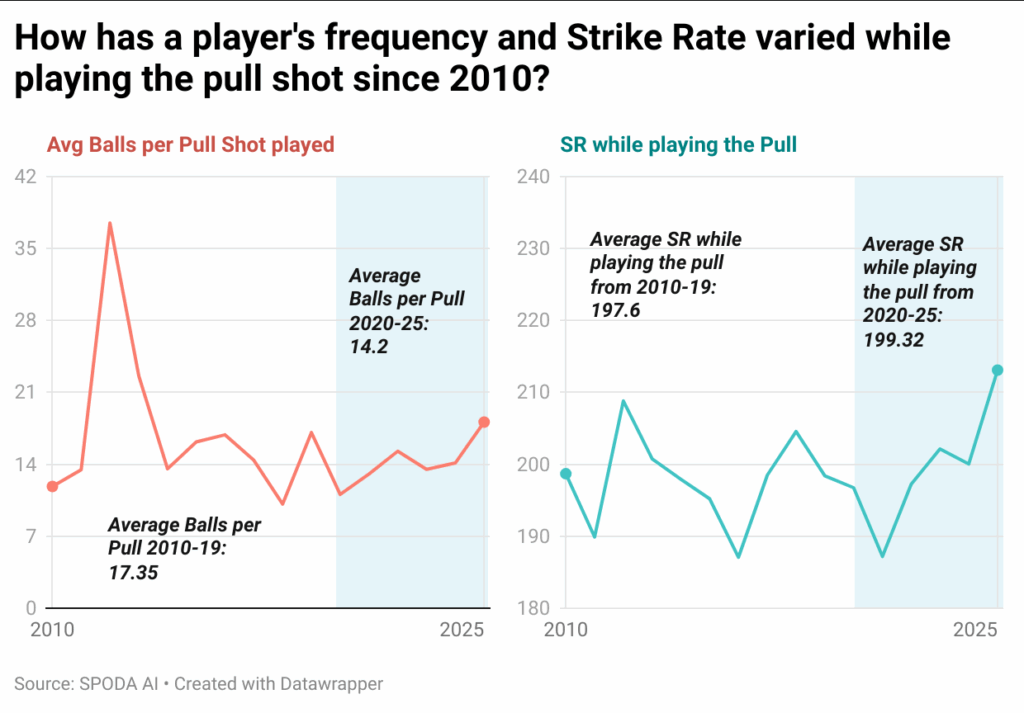
The data further confirms this evolution. From 2010 to 2025, the average balls per pull shot dropped from 17.35 pre-2020 to 14.2 post-2020, meaning batters are attempting the pull more often. Their effectiveness hasn’t suffered either: the average strike rate for pull shots climbed slightly from 197 to 199. That’s nearly 2 runs per ball every time a batter pulls.
The Final Verdict
The rise in six-hitting in men’s T20 cricket is not about pitches getting flatter or bowlers losing their craft. It’s about modern batters evolving—technically, mentally, and physically. Today’s players are fitter, stronger, and better equipped to take on traditional bowling plans. The increasing confidence and success against the short ball, especially with the pull shot, perfectly illustrate this shift.
Six-hitting, once considered high-risk, has now become a calculated, repeatable skill in the modern T20 game.
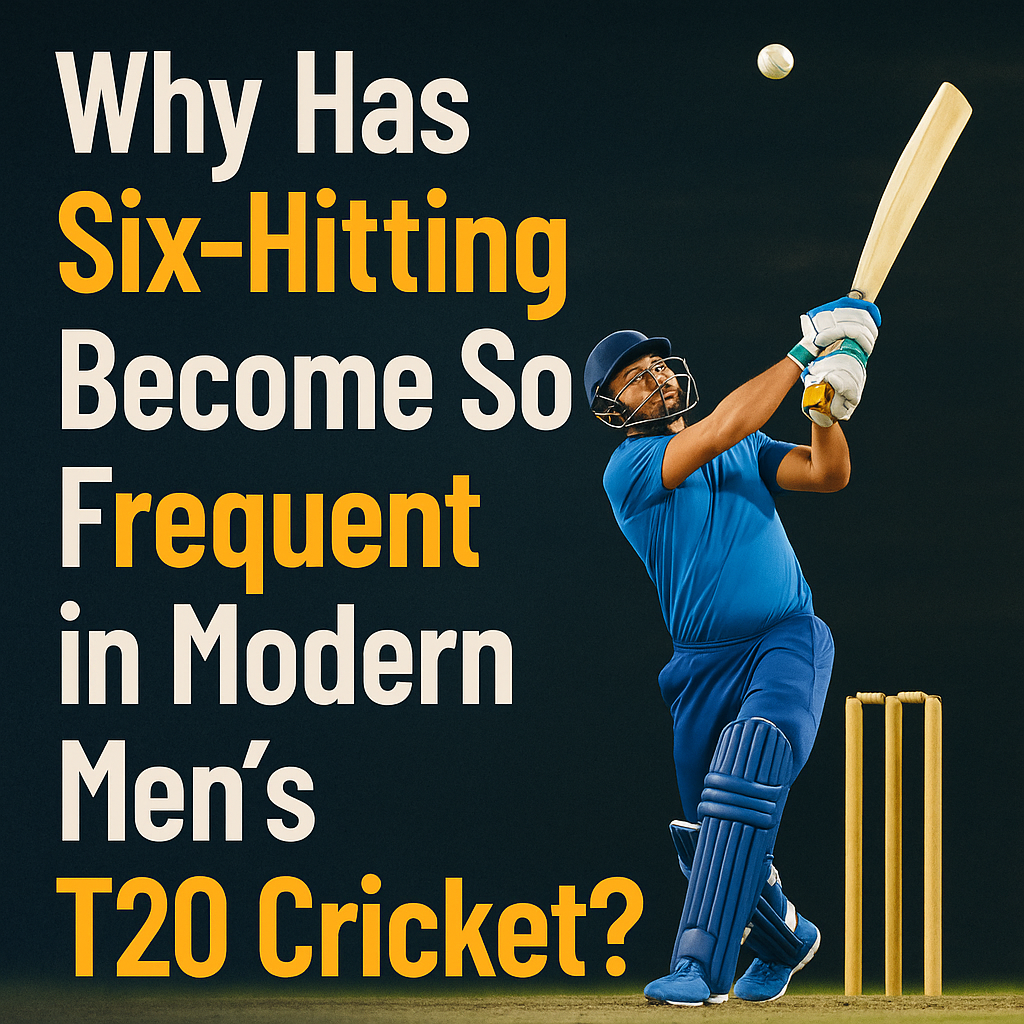
Leave a Reply